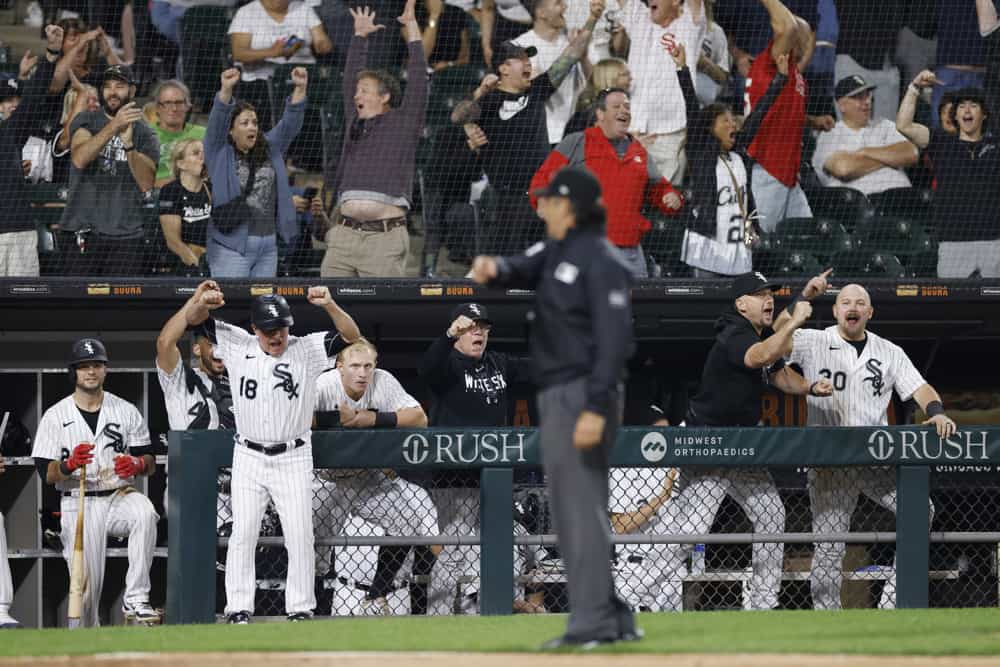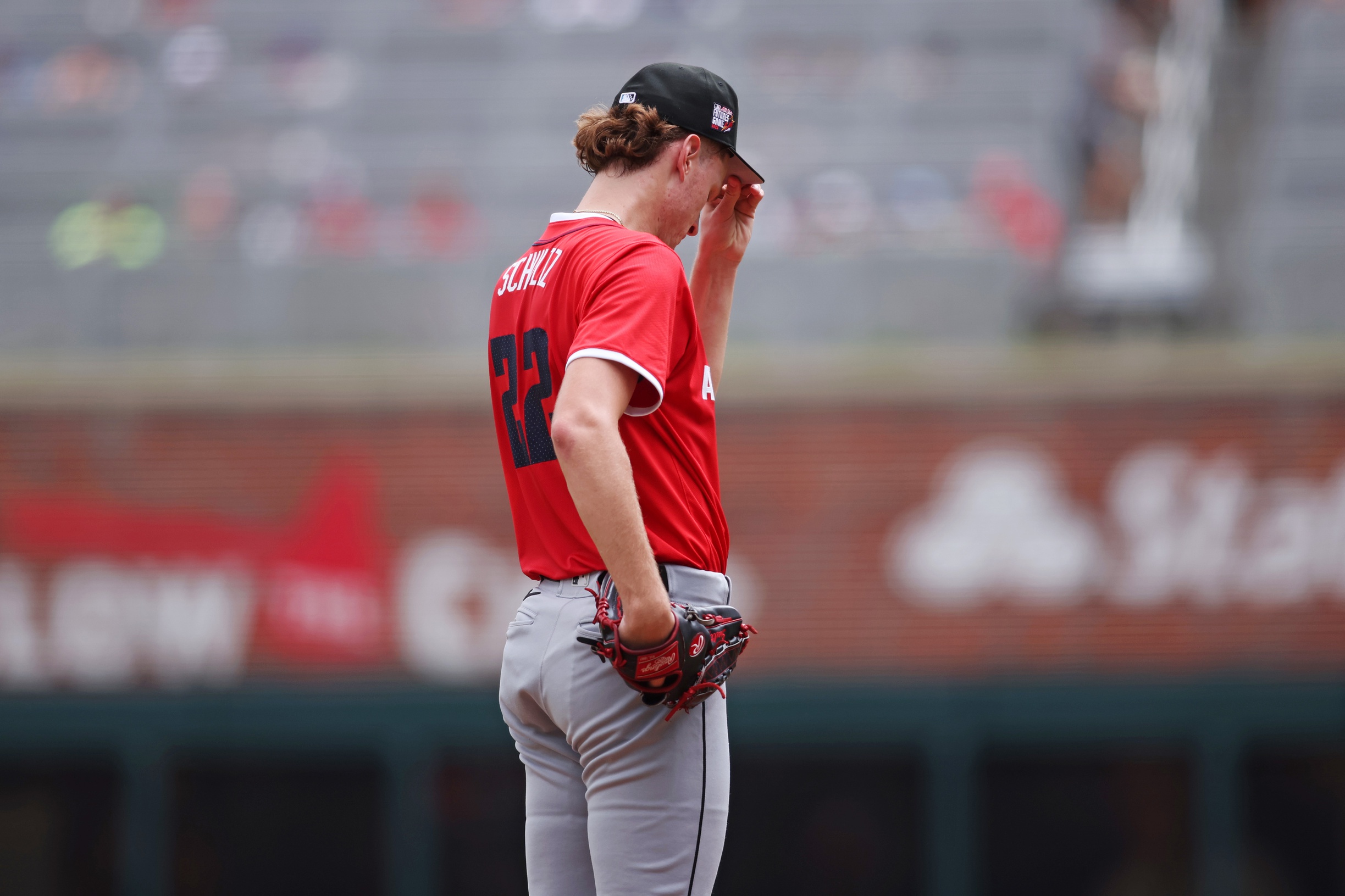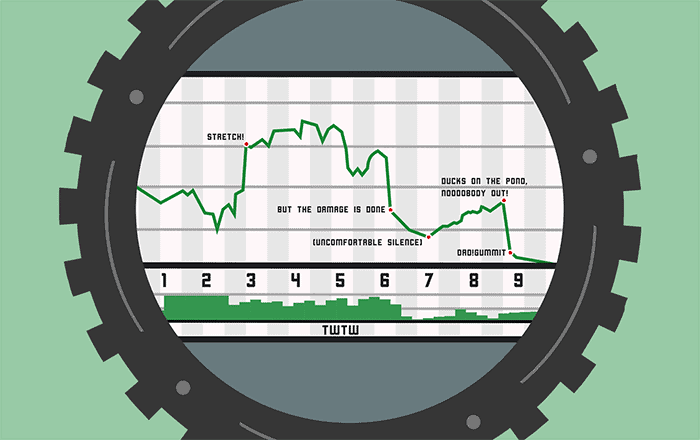We haven't really heard much about the plate-blocking rule since the 2014 season because some rough edges got smoothed out after some feedback, and catchers formed habits pretty quickly afterward, but tonight's game reminded me of what the rule's opponents feared at the onset.
With Elvis Andrus on second and two outs in the eighth inning of a game tied at 6, Zach Remillard floated a single to left field. Eddie Rodríguez waved Andrus home, and Travis Jankowski made an on-target, one-hop throw to Jonah Heim, who planted a tag on Andrus' elbow an inch before Andrus' hand touched home plate. It was clutch hitting negated by clutch defense; a Great Baseball Play™.
The White Sox called for a review because there wasn't much to lose, and when the call came back from New York, it turns out they had everything to gain.
Andrus was ruled safe, not because an angle showed his hand beating the tag, but because Heim was called for blocking the plate.
That possibility didn't cross my mind, and the White Sox broadcast and national audience on Twitter seemed equally surprised, because Heim received the ball in what seemed to be a fair place, and Andrus' hand took a direct path to the plate without obstruction. But Heim was flagged for standing on the plate before the ball arrived, first with his left foot while watching the play, and then with his right foot as the throw came in.
The reasoning, FWIW: "The catcher’s initial positioning was illegal and his subsequent actions while not in possession of the ball hindered and impeded the runner’s path to home plate." https://t.co/wLfI5sGE8R
— Jesse Rogers (@JesseRogersESPN) June 21, 2023
It makes sense in the abstract, because standing on or straddling the plate before the ball arrives makes it easy to drop a knee on the baserunner as he's coming in -- or for a baserunner to shatter some lower leg bones if that foot is planted -- but Heim didn't seem to violate the spirit of the rule with the way he applied the tag to Andrus. The letter of the law trumped an aesthetically pleasing action sequence.
Regardless, that's how the White Sox won, because Kendall Graveman went on to have the only drama-free inning of any White Sox reliever for the save. The Sox are now just 4½ games out of first place.
The evening was already plenty charged before rulebook-reading became necessary, because this oscillated between thrilling victory and gutting loss a few times beforehand. The Sox took a 2-0 lead after one, lost it by the top of the fifth, regained it in the bottom of the fifth, lost it in the top of the seventh, and trailed for the first time in the top of the eighth.
It was a rare White Sox game where the offense covered for so many imperfections elsewhere, at least after Dylan Cease left the game.
Cease pitched well, holding the Rangers to just two runs on five hits and two walks over six innings while striking out nine. He hung a curveball to Adolis Garcia for a solo shot in the fourth, and Marcus Semien and Corey Seager showed their mettle with a couple of two-out hits in the fifth, but that represented all of the damage. His slider did the heavy lifting, accounting for 19 of his season-high 24 whiffs.
The White Sox restored the two-run lead in the fifth thanks to Andrus' go-ahead homer off Nathan Eovaldi, followed by a productive three-batter sequence: an infield single by Remillard, a first-to-thirding single by Andrew Benintendi, and an RBI chopper from Andrew Vaughn. Cease capped off his night with a 1-2-3 sixth.
And then it got silly.
Keynan Middleton entered and failed to retire any the four batters he faced. He gave up a singles to Jankowski and Leody Taveras that put runners on the corners, and then Semien turned a 1-2 count into a nine-pitch walk to load the bases. Seager once again came through with a two-run single that tied the game at 4, and Pedro Grifol came out to pull Middleton for Gregory Santos.
With runners on first and second, Santos immediately achieved the desired outcome by getting Josh Jung to roll over a well-located slider for a routine 6-4-3 ball to short. But Andrus flubbed it, and couldn't even settle for the fielder's choice, leaving Santos to effectively record five outs.
Which he did. He threw another one of those well-located sliders to García, who hit a bouncer to third that Jake Burger turned into a force at the plate. Santos then hammered Nathaniel Lowe low and in for a four-pitch strikeout, and got Heim to ground out to second to escape the jam with no runs allowed.
When Santos departed, however, he was in line for the loss. He allowed an infield single to Jankowski on a mile-high chopper of the plate, and then Taveras singled through the left side to turn over the batting order. Santos retired Semien on a routine flyout to right, which brought Seager to the plate.
Grifol called for Aaron Bummer despite Bummer's ineffectiveness against left-handed hitters this year, and the reverse splits once again stuck. He fell behind 2-0 on two sliders well off the plate, and when he tried to get back into the count with a sinker, he left it over the plate, and Seager rifled it to the right-of-center gap to score both runners for a 6-4 Rangers lead.
The Texas bullpen has been the team's only vulnerable area, and even the White Sox could take advantage. Luis Robert Jr. drew a one-out walk off Grant Anderson, and Yasmani Grandal followed by dropping a single to left. Grifol then opted to empty the bench by having José Rodríguez run for Grandal in his MLB debut, and Tim Anderson hit for Clint Frazier.
The latter move didn't really make sense, but Anderson's grounder to the right side was too soft and toward first base for Semien to do anything but settle for the out at first, and Andrus capitalized on the swinging sac bunt with a single through the right side that scored both runners to tie the game at 6. García, who has a great arm, trusted it too much and threw home, which allowed Andrus to take a key 90 feet. Remillard then padded his WPA total by hooking an 0-1 slider over shortstop, and the rest was left to the lawyers.
Bullet points:
*Eloy Jiménez followed Andrew Vaughn's opposite-field single with an opposite-field homer in the first inning, breaking a streak of nine straight homers with the bases empty.
*Frazier took a couple of frantic routes in center. He made a basket catch in the first inning, but wasn't as successful on Seager's fifth-inning double, which was hit directly over his head. That might've been why Robert entered as a defensive replacement on what was supposed to be his day off.
*Bummer picked up the win despite allowing the go-ahead runs to score.
*The bottom of the order loomed large for both teams. Texas went 4-for-9 with a walk and five runs scored from the eighth and ninth spots, while Andrus and Remillard were 4-for-8 with three runs and four RBIs for the Sox.






